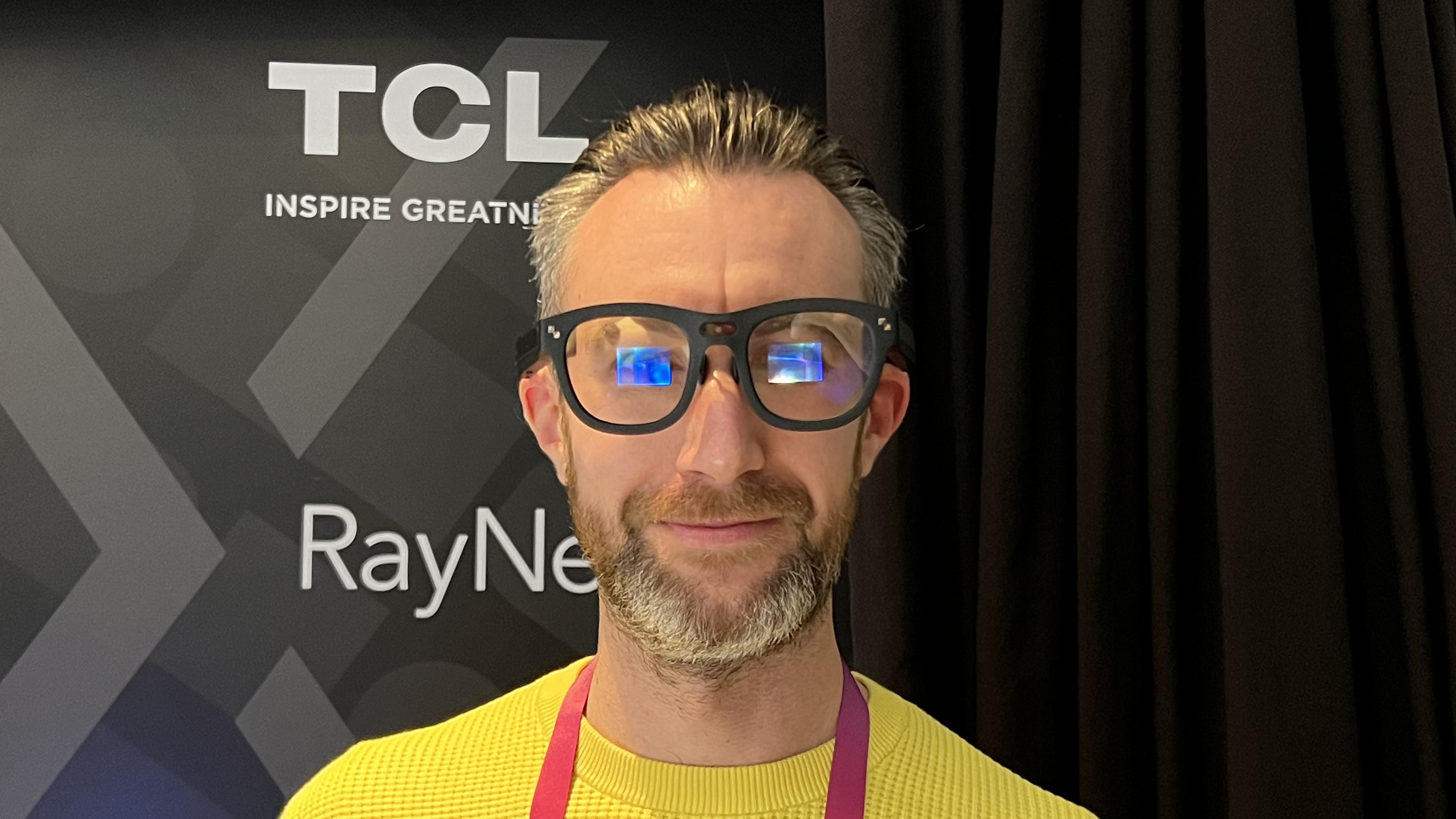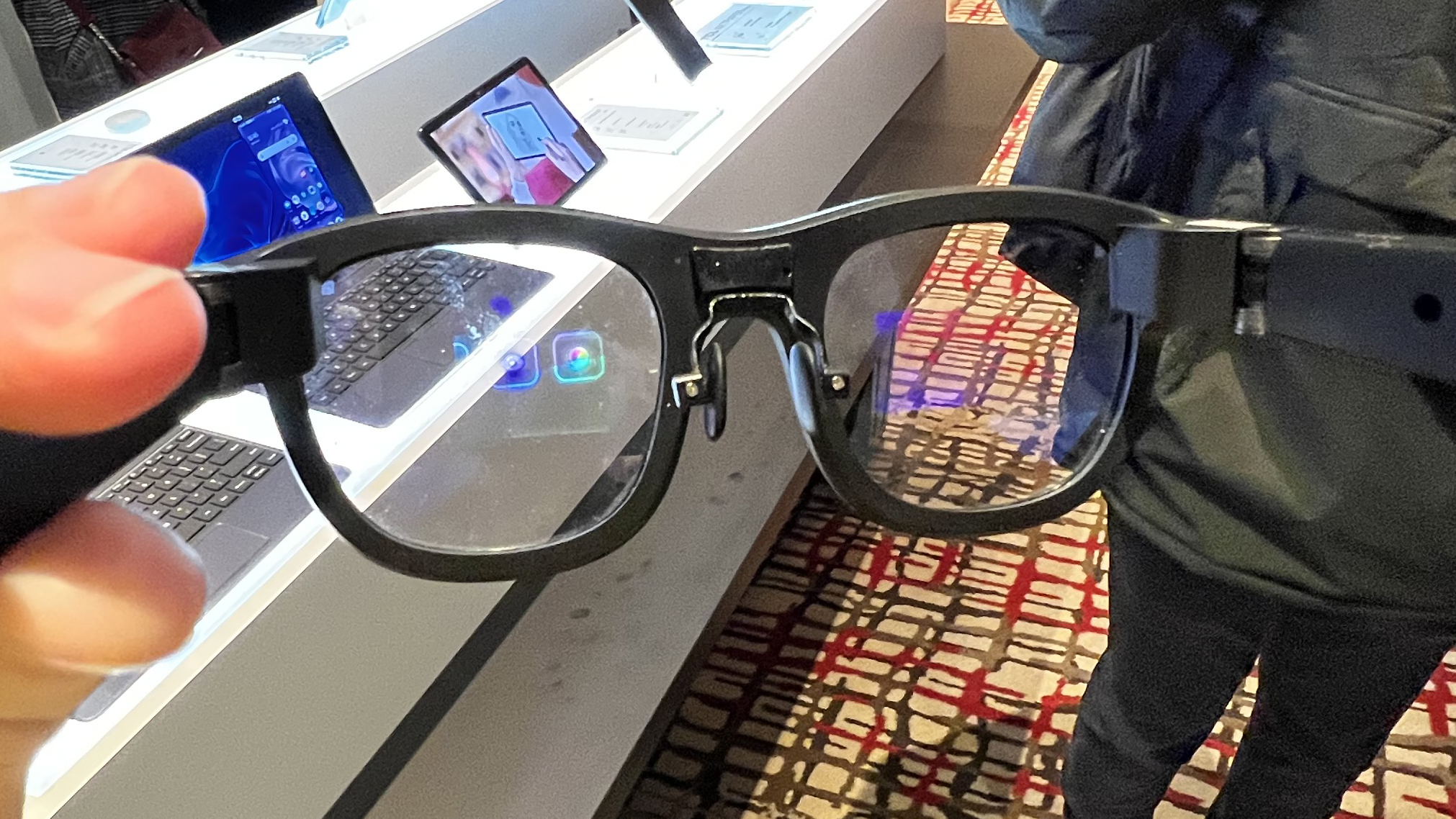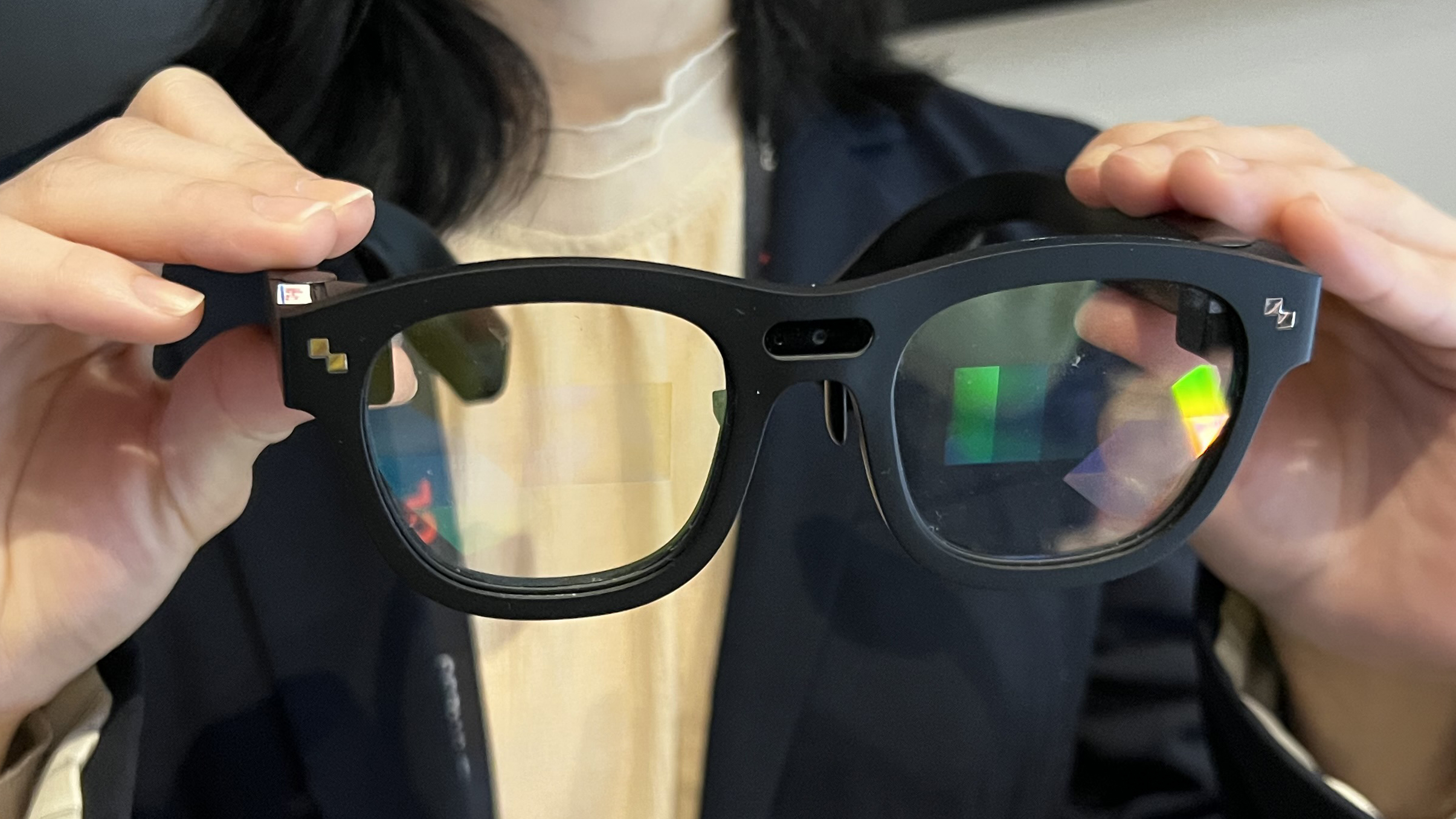I tried TCL's AR glasses you’ll never need (or want) to take off
The TCL RayNeo X2 could be the AR glasses we've been waiting for

This year’s CES 2023 tech conference is in full swing, and TCL has taken the opportunity to unveil a brand new pair of AR specs called the TCL RayNeo X2. I had the chance to try them out – and they're the best showcase yet for how (or why) AR glasses might become something people really want.
The TCL RayNeo X2 glasses share a lot of similarities with other recent AR smart glasses to appear on the scene – like the Nreal Air and VITURE One XR Glasses. Just like those that have come before, they look like a chunky pair of specs, but the lenses have been outfitted with a pair of Micro-LED optical waveguide displays that provide the wearer with a personal heads-up display, and in the glasses’ stems you’ll find speakers so you can hear audio through them too.
Unlike the old Google Glass, they feature screens in both lenses, which is vital to making the information look clear, and fit within the world around you. What 'optical waveguide displays' means is that the screens are actually in the frame of the glasses, and project down through the lens. Angled grooves in the glass reflect the light towards your eyes, so there are no pixels or electronics in (or in front of) the glass itself. If you need corrective lenses, you can get them, and you can actually swap the lenses in the future without having to get rid of the electronic part.
Devices like the Nreal Air should really only be worn while you’re sitting down. That’s because while you can sorta see through them, your vision isn’t completely clear. If you kept them on while walking around, you might bump into something or someone you didn’t spot.

It works exactly as described by TCL – you can see through them perfectly well, but information floats in front of your eyes, too. And that information is clear and sharp, and can be shown across a broad range of your vision, from top to bottom, left to right. It's never too far from the center, though, so you don't have to move your eyes a lot and strain to look at anything. It's clearly been very carefully thought out in terms of the all-important ergonomics.
The RayNeo X2’s less restrictive view means that you shouldn’t feel the need to take them off to move around, which not only makes them more convenient to wear but also opens up a whole suite of possible features – options that TCL is already capitalizing on.
One upgrade that sets TCL’s glasses apart from the rest is that it harnesses a Qualcomm Snapdragon XR2 chip – the same you’ll find in Meta’s Oculus Quest 2 VR headset. This means that while it can connect to a phone for improved functionality, a phone shouldn’t be necessary for every feature. The glasses are also outfitted with a camera in the bridge, which provides more options for AR options (and works as a regular camera so you can take pics).
Seeing is believing
How well do they work? Well, they're clearly in the early stages, but they're the most convincing proof of concept for AR glasses that I've seen so far – because of how simple their features are, rather than because of how high-end or lofty the goal is.
TCL's Stefan Streit told me that the idea is to approach the AR glasses in the same way the smartwatch was originally approached. Wearables like the Apple Watch took off not because they tried to replicate everything you could do on a phone, or by trying to be some whole new kind of experience completely disconnected from the phone – they took the most useful things and made them easier and quicker to access.
The goal is to do the same here, and so the big showpiece demo that TCL gave me was the live translation and subtitling tool. This is something that's better in glasses than on any other platform – and that's not TCL saying that, that's how I feel after trying it, even in this early form.

I wore the glasses and put them in translation mode, which basically adds live subtitles to your life. As people are talking, words appear at the bottom of the screen (it shows a couple of lines, so you can see a whole sentence at once).
Then, someone started speaking to me in Chinese. After a couple of seconds, an English version of what she was saying popped up on my screen. She was asking me what country I had come from. I answered (in English, which she understood), and she then followed up with more questions in Chinese. We had a whole conversation, and she didn't say anything in English.
And, amusingly, there were some French people nearby having a conversation, and I could read what they were saying too – unplanned, but the glasses just jumped in to help.
There was a bit of a problem that other conversations interfered with the one conversation I was having, but TCL said they're working on focusing so the glasses only pick up what someone in front of you is saying.
TCL's next step with the glasses is to give them to developers to work out what more can be done, and how the current interface and functions could be improved. For example, in my story above, you might notice that my smooth conversation relied on the fact that I was speaking to someone bi-lingual, who could understand my English responses. A logical upgrade to the glasses might be that if someone asks you a question in another language, it could suggest some common responses in the other person's language. It would also be great if it added colors to the subtitles to indicate if it is hearing different people's voices and differentiate between them.
I also switched to the camera app, using the controls on the arm of the glasses. You can double-tap to bring up the option, then swipe left and right to choose apps. Within the camera, you get a viewfinder indicating what will be captured, and then you tap the bridge to trigger it. The photos can be accessed from your phone easily – though don't expect them to rival the best camera phones for quality. TCL described the resolution as "HD".

Now, I'm still not completely sold on the social viability of people always having a camera on their faces but we're told that will be another area where TCL learns from testing (and from the past, such as people's experiences with Snap Spectacles and Google Glass). The battery life is also a question right now – TCL hasn't revealed how long they last, though we imagine it will depend partly on what activities you do. Some will require a lot more communication and processing than others.
In the future, I'm particularly excited to try out the glasses’ navigation tools which don’t just include your basic directions info so you know how to reach a preprogrammed destination, but also a tool that showcases nearby landmarks, a lot like the AR mapping from Google Maps and Apple Maps. The next time we visit a new city, I can already see these glasses helping us to find the best places to go and explore.
TCL plans to get the glasses in the hands of developers in the first quarter of 2023, and hopes to launch by the end of the second quarter of 2023 – so perhaps by June. This sounds ambitious to me – I'm seriously impressed with the potential, but I think that if the developer program is successful, they'll get a lot of feedback with improvements and suggestions. And they probably need them if they're to have a really successful launch.
There’s also no word yet on how much these glasses will cost, but we wouldn’t be surprised if they were north of the $500 / £500 / AU$750 mark. I think they could be a fairly successful first-gen product at that price – I don't expect to see them on everybody's face, of course, but it could be affordable enough for people to start spreading the word about how useful they can be, and maybe the AR future will finally start to build up some steam.
Check out our CES 2023 hub for all the latest news and announcements from the show. We're covering everything from 8K TVs and foldable displays to new phones, laptops, and smart home gadgets.
Get daily insight, inspiration and deals in your inbox
Sign up for breaking news, reviews, opinion, top tech deals, and more.

Matt is TechRadar's Managing Editor for Entertainment, meaning he's in charge of persuading our team of writers and reviewers to watch the latest TV shows and movies on gorgeous TVs and listen to fantastic speakers and headphones. It's a tough task, as you can imagine. Matt has over a decade of experience in tech publishing, and previously ran the TV & audio coverage for our colleagues at T3.com, and before that he edited T3 magazine. During his career, he's also contributed to places as varied as Creative Bloq, PC Gamer, PetsRadar, MacLife, and Edge. TV and movie nerdism is his speciality, and he goes to the cinema three times a week. He's always happy to explain the virtues of Dolby Vision over a drink, but he might need to use props, like he's explaining the offside rule.
- Hamish HectorSenior Staff Writer, News